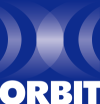| Version 18 (modified by , 6 months ago) ( diff ) |
|---|
Digital Twin for Network Energy Consumption
Team: Andy GarciaUG, Hanshal Chandrashekara ReddyUG, Jinun Kim HS
Advisors: N.K. Shankaranarayanan and Ivan Seskar
Mentors: Zhuohuan Li
Project Description & Goals:
Rising demand for next-generation wireless networks, from 5G to 6G, is driving up energy consumption and operational costs. This project will build upon existing work and the current codebase of a digital twin model to test which specific units in Open-Radio Access Networks (O-RAN) can be turned ON/OFF to optimize energy efficiency. Our group will explore various configurations of O-RAN components to determine which setups can best maintain network coverage during different types of traffic loads periods.
Technologies: Python, VSCode
Week 1:
Slides: https://drive.google.com/file/d/1r6w2wyRBS0CpifyyU4qOzbmBlCEb3x6A/view?usp=drive_link
Progress
- Started working on the Digital Twin for Energy Consumption project by identifying key goals, reviewing past intern work to understand next steps, and setting up the development environment to prepare for testing and future contributions.
Week 2:
Slides: https://drive.google.com/file/d/1jqG9n97e7Y4yiLGkz5SNo9PsgjG5evyu/view?usp=drive_link
Progress:
- This week involved an introduction to the ORBIT and COSMOS content, where the Digital Twin project will be implemented. Time was spent reviewing basic command line interface (CLI) commands and working within the provided image. Last year’s project code was downloaded onto the image and explored to better understand its structure. These initial steps are helping to build a solid foundation for contributing to the ongoing work of the Digital Twin project.
Week 3:
Slides: https://drive.google.com/file/d/1hYcsBtK5Or--BFvMtzCQ9mtk4XMbUKBl/view?usp=drive_link
Progress:
- By using the code developed by the previous project intern, we successfully ran the files in Visual Studio Code and generated several plots to visualize when energy-saving modes are activated or inactive.
Week 4:
Slides: https://drive.google.com/file/d/1f5Tgh6QqJwIzyjkWz2SWaY4nyhEcU_U9/view?usp=sharing
Progress:
- This week, we were able to create informative visuals from a specific scenario from the previous year's work. This diagram made it simple to understand how exactly the scenario worked and how the code functioned for the scenario. We were also able to recreate specific plots that better helped us understand the outcomes of different scenarios. We specifically analyzed the Total Network Power Consumption and System Energy Efficiency plots to get a better understanding of the scenarios.
Week 5:
Slides: https://drive.google.com/file/d/1UhsPGLY754pcVk1GvdJwdy1pDazf4RP5/view?usp=sharing
Progress:
- This week, we were able to create 2 new scenarios with new configurations of radio units and distributed units. We specifically focused on implementing 2 new forms of radio units: micro and pico. We did this in order to be able to test our configuration to see if using multiple types of RU's will allow for more energy efficiency. We also combined the existing code into a single Python file for ease of access. The new file is separated to display what each part of the code's function is, and this will also make it easier to implement these new scenarios and also tracing logic as well as debugging.
